Very popular among summer residents is an inexpensive and effective copper sulfate. Horticultural Application of Autumn Chemicals copper-based beneficial effect on the life cycle of plants. The combination of the unique and diverse properties of the drug allows you to fight diseases and pests of fruit and berry crops in the garden.

Content
Copper Sulfate Properties
Copper sulfate is called copper sulfate pentahydrate. The composition of the inorganic compound of copper salt is described by the chemical formula CuSO₄ ∙ 5H₂O. This means that five water molecules are attached to one molecule of the main substance by hydrogen bonds.
Copper sulphate - crystalline salt of ultramarine hue. The odorless chemical has a bitter aftertaste. Upon heating of the pentahydrate, the detachment of H₂O molecules begins, and at temperatures above 260 ˚C anhydrous white copper sulfate is formed. In dissolved form, the substance enters a substitution reaction with metals, and also actively interacts with alkalis, forming a blue precipitate of copper hydroxide Cu (OH) ₂.
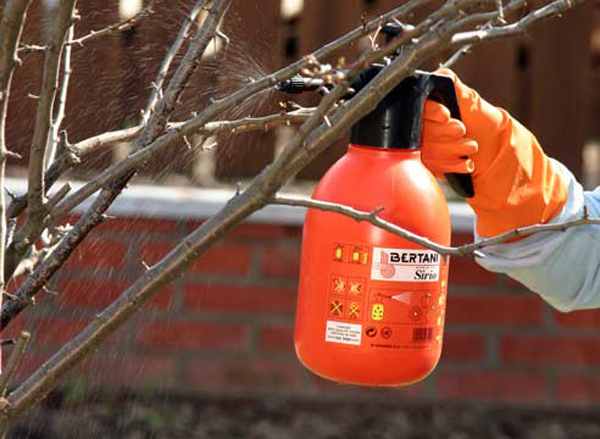 You may be interested in:
You may be interested in: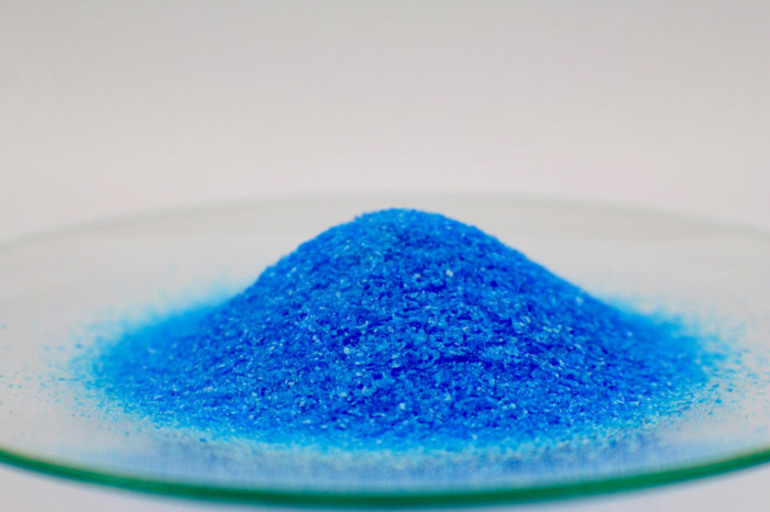
In nature, the compound is common in rocks containing chalcanthite. The mineral, the composition of which corresponds to the formula of copper sulfate, has the form of crystals of various sizes. Large deposits are mines in the Northern Urals, near Nizhny Tagil and in the Caucasus. In industrial production, the sulfate metal salt is obtained from copper waste by dissolution in sulfuric acid.
Copper sulfate is used in galvanic cells, in the manufacture of mineral paints and in leather dressing. In agriculture, to combat diseases and pests, copper sulphate is used to pickle grain and process plants. Copper salt serves as a starting material for various metal compounds with other chemical elements.
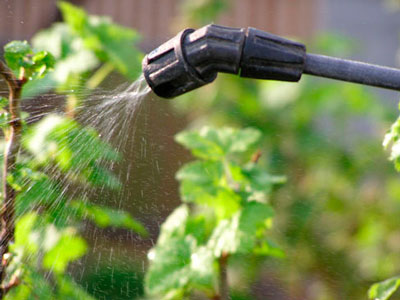 You may be interested in:
You may be interested in:Garden application
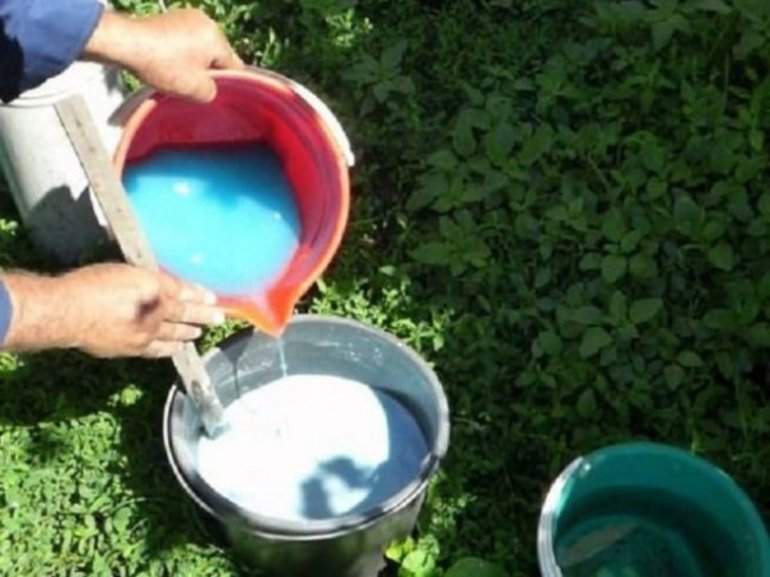
Copper is a vital element for the existence of plants. Metal is part of enzymes that regulate oxidative and reduction processes. Dissolved copper salts have a beneficial effect on nitrogen and carbon metabolism, stimulate photosynthesis and the formation of chlorophyll, and protect against bacterial and fungal diseases.
Copper sulfate contributes to the stable growth of shoots, develops and strengthens the root system, increases plant productivity. The use of copper sulfate in gardening increases the content of ascorbic acid, sugar and starch in vegetables and fruits. Garden treatment with drugscontaining copper salts, increases the frost resistance of crops. Various goals are pursued by the use of copper sulfate in horticulture in the fall. The dosage of the drug for each operation is specific.
Country antiseptic
Autumn pruning is done in the garden each year.A summer resident has to cut down damaged, diseased and old branches. Knots sticking out of the trunks also lie down for removal. The tree is wounded. In addition, the lack of micronutrients and adverse climatic conditions cause cracking of the bark. The resulting cracks become a haven for the larvae of harmful insects and fungal infections.
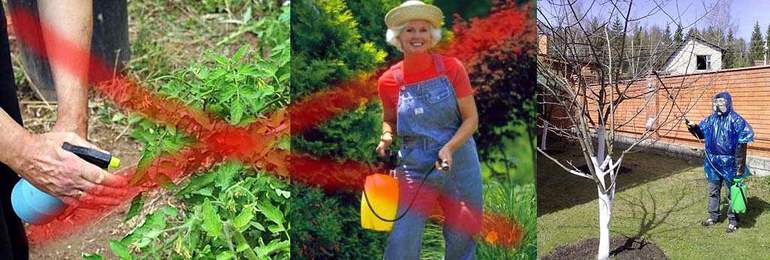
In order for the plant to successfully survive the traumatic pruning operation, damaged areas and crevices in the cortex are disinfected with an antiseptic. The blue chemical does a great job with this role.
Dosage and treatment of plants with copper sulphate in autumn has features. To prepare a 1% solution of copper sulfate in 10 l of water, 100 g of the chemical is dissolved. In the resulting mixture diluted shavings of laundry soap. The detergent will not allow autumn rains to quickly wash off the drug from the tree trunk.
The treatment of exposed wood is combined with spraying the whole plant, in places of open wounds, a greater amount of substrate is applied.
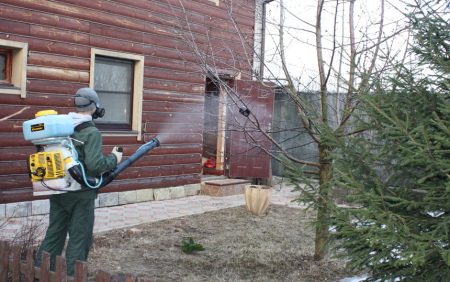 You may be interested in:
You may be interested in:Healing fungicide
Due to its bactericidal properties, copper sulfate is effective in the prevention of diseases that cause parasitic microorganisms and harmful insects. In gardening, copper salt used to combat such lesions of trees and shrubs as:
- late blight;
- powdery mildew;
- root fungus;
- rust of bark and leaves;
- scab of fruit trees and root crops.
The proportions of the components and the procedure for preparing the solution are set out on the packaging of the drug. For spraying trees, as a rule, a 3% solution of copper crystalline hydrate is used.
Copper Sulfur Fertilizer
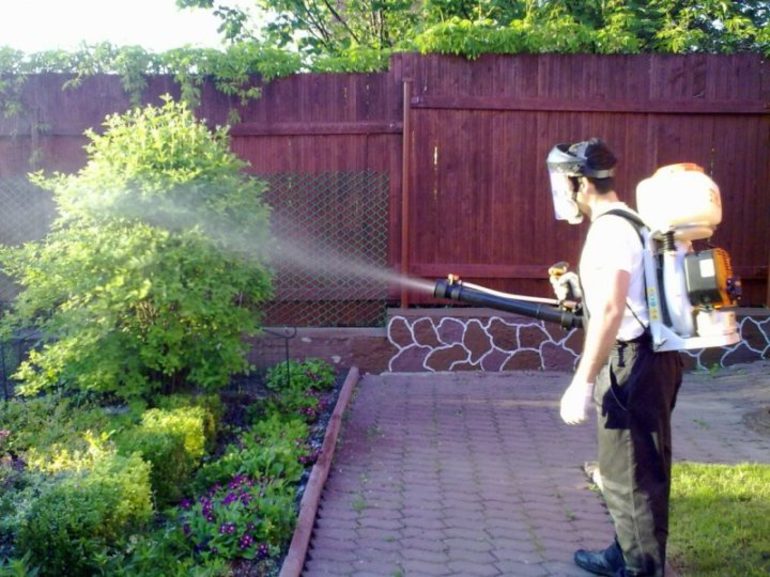
In autumn gardening, copper sulfate is designed to increase soil fertility. Substances introduced into the soil are intended for plant nutrition and to fill the deficit of elements that stimulate growth. Copper sulfate is used as an independent drug and is part of complex fertilizers. Based on copper salt, copper-potassium top dressing and double superphosphate are made.
The lack of Cu in the soil is determined by the appearance of the plant. Numerous young shoots appear on the trees, which quickly dry out and die. The leaves turn pale green, and the edges turn white. Cracks appear on the cortex. Abundant gum secretion begins.
It is undesirable excessive zeal in fertilizing the soil with copper fertilizers. Excess CuSO₄ ∙ 5H₂O causes the appearance of brown spots on the surface of the sheet, so the soil is watered with a low concentration solution. To prepare the drug use 5 g of crystalline powder per 10 l of water. The consumption rate is 5 liters of liquid per 1 square meter of area.
Processing rose bushes
Any garden plant must be prepared for the winter cold. The rose bush is no exception. Unreadiness for wintering is determined by the presence of reddish shoots. This suggests that the rose has not accumulated enough carbohydrates and continues to develop. In this case, phosphorus fertilizer is introduced into the soil, and the shoots are pinched. Soon the leaves will turn green and it will be possible to proceed to the winter processing of the plant. Preparing a rose for winter is carried out in stages:- Trimming dry and diseased branches and leaves, which are then burned.
- Cleaning and loosening the soil around the rose.
- Preparation of a solution of sulfate salt.
- Chemical treatment of plants and surrounding land. About 1 liter of liquid is consumed per bush.
When spraying roses, a 3% solution of the drug is used. This concentration is achieved by diluting 30 g of copper sulfate in 1 liter of water. After all operations, the plant is covered with spruce branches or special synthetic covering material.
Precautionary measures
A moderately toxic chemical refers to substances that are assigned hazard class IV. A harmful effect becomes apparent when 0.5 g of the compound is ingested. The dose leading to death depends on the age, weight, physical form of a person and can be 40-120 g.
When copper sulfate enters the digestive tract, the victim’s stomach is washed with a diluted solution of potassium permanganate. In addition, diuretics and laxatives are used. Contact with dry matter on the skin is harmless, but it is advisable to immediately wash it off. If the drug gets into your eyes, then they need to be washed extensively and for a long time with a weak stream of running water.

Preparation of a solution of copper sulfate and spraying of garden plants must be carried out with gloves and a respirator, instead of which it is allowed to use a hygienic medical mask and glasses with light glasses. The chemical is stored in carefully sealed glass or plastic containers, out of the reach of children. It is unacceptable to find the drug near food and animal feed.
The effect of the use of copper sulfate on the garden is difficult to overestimate. The chemical is sold in specialized gardening stores and building materials supermarkets. The preparation and use of a working solution in the garden is accessible to anyone, and observing safety precautions during work is not difficult.

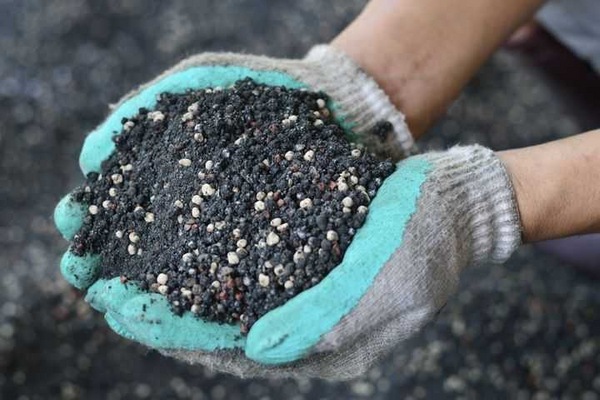
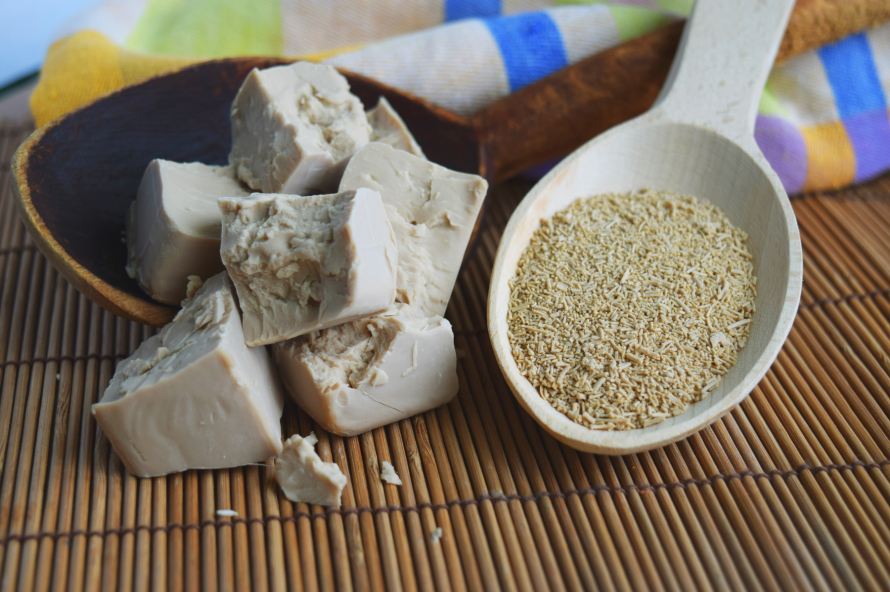
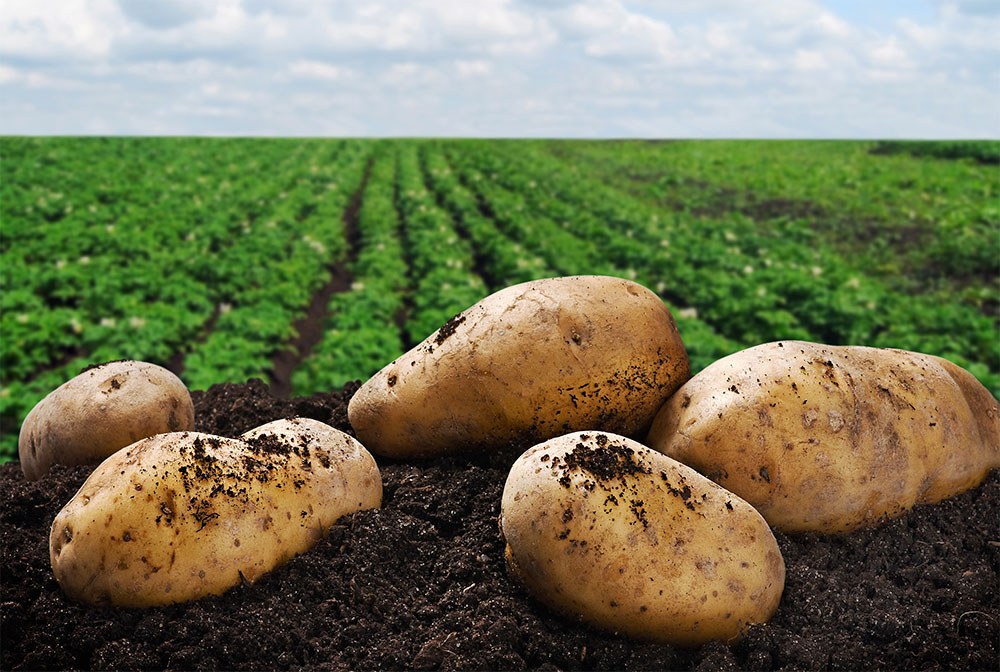
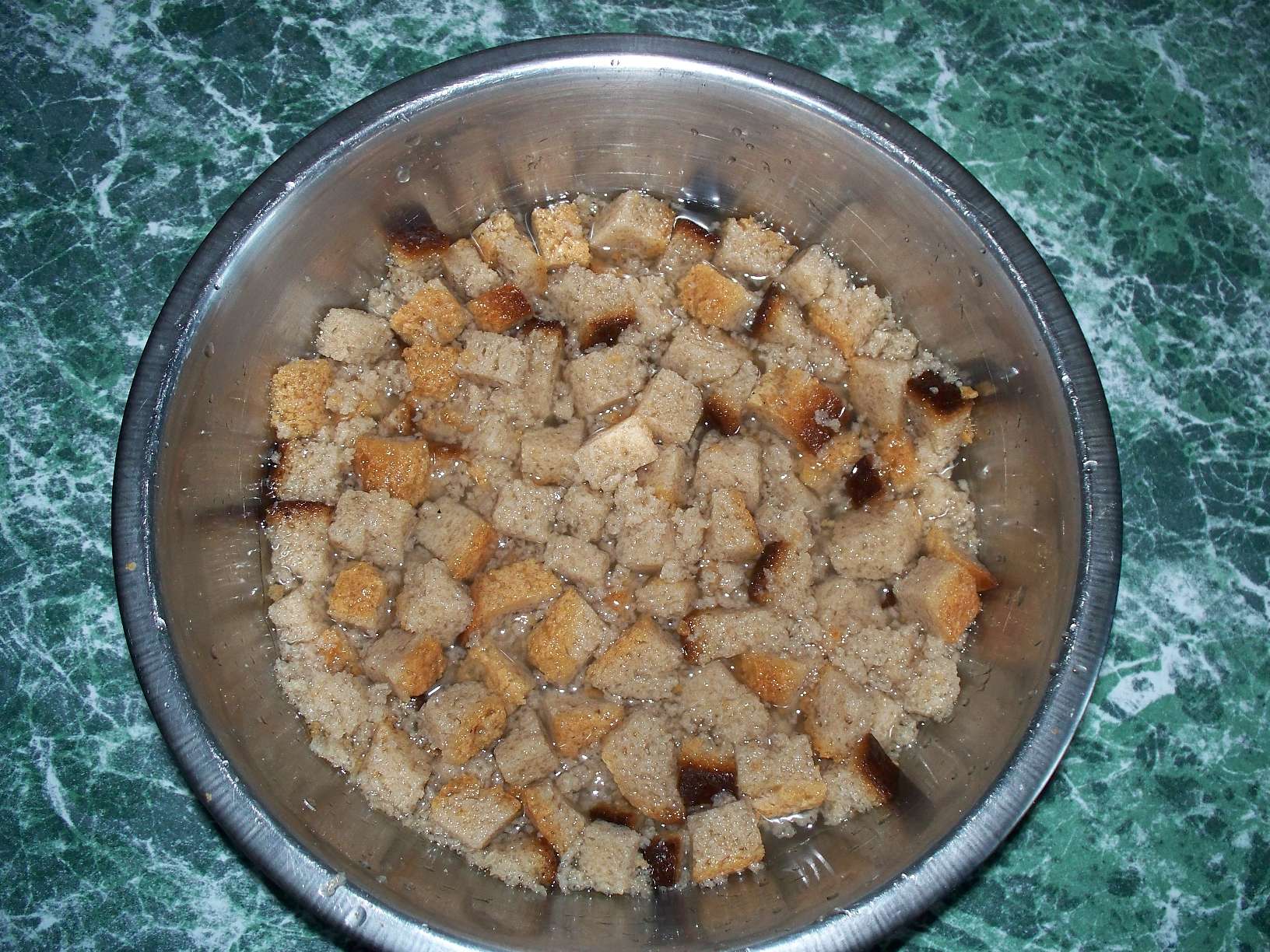 How to make bread infusion for feeding cucumbers
How to make bread infusion for feeding cucumbers Superphosphate: what is it and how to apply it
Superphosphate: what is it and how to apply it What problems can be expected from siderats?
What problems can be expected from siderats? Secrets of the collection, storage and use of eggshells in the garden
Secrets of the collection, storage and use of eggshells in the garden